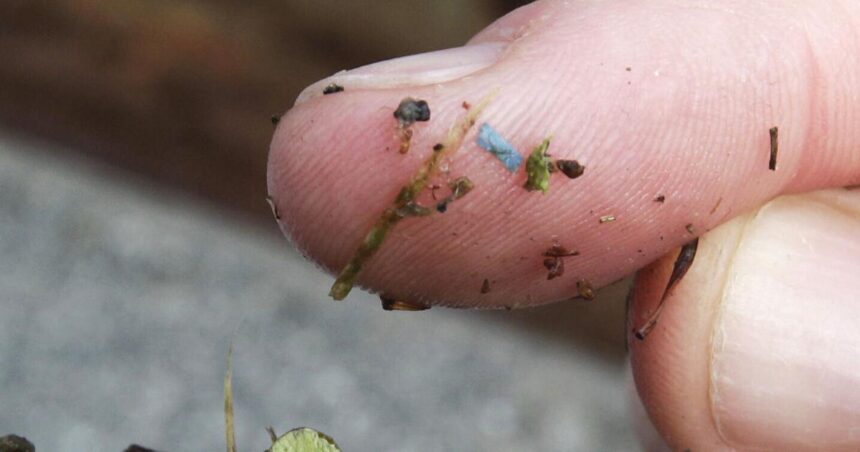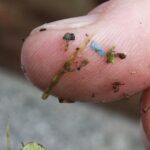Microplastics have been found in the ocean and the air, in our food and water. They have been found in a wide range of body tissues, including the heart, liver, kidneys, and even testicles.
But are they actually harming you?
Evidence suggests they might, but it’s limited in scope. Some researchers are worried but acknowledge there are lots of unanswered questions.
Microplastics — like this blue rectangular piece — have been detected in air, water, soil, drinking water and a variety of foods.
Dr. Marya Zlatnik, a San Francisco-based obstetrician who has studied environmental toxins and pregnancy, has seen studies raising concerns about microplastics’ impact on the health of babies and adults.
But it’s a young research field, and it’s not something she generally discusses with patients.
“I’m not entirely sure what to say yet,” Zlatnik said.
Here’s a look at what’s known so far:
People are also reading…
What are microplastics?
Plastics are man-made materials — many of them derived from oil or other petroleum products. They can break down into smaller particles, through exposure to heat and weather and even animal digestion.
Researchers have increasingly been interested in microplastics, which can be as wide as a pencil eraser or as small as a fraction of the width of a human hair. Nanoplastics, another area of study, are even smaller.
These minuscule plastics have been detected in air, water and soil, in milk, and in bottled and tap drinking water. They also have been found in a variety of foods, including salt, sugar, honey, rice, and seafood.
Are there microplastics in you?
There is scientific debate about how much people inhale and ingest, and it can vary on what they eat and drink and where they live, researchers say.
Some Australian researchers, on behalf of the World Wildlife Fund, calculated in 2019 that many people each week consume roughly 5 grams of plastic from common food and beverages — the equivalent of a credit card. That estimate is not universally embraced by researchers but is commonly mentioned in news articles.
Researchers are still trying to understand exposure levels, but study after study is finding signs of plastics in body tissues.
“Microplastics have been measured in pretty much all of the body tissues that have been evaluated,” said Tracey Woodruff, a University of California at San Francisco researcher. Scientists have even reported finding them in the penis, ovaries, and placentas.






